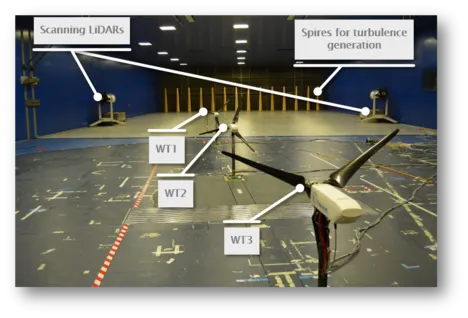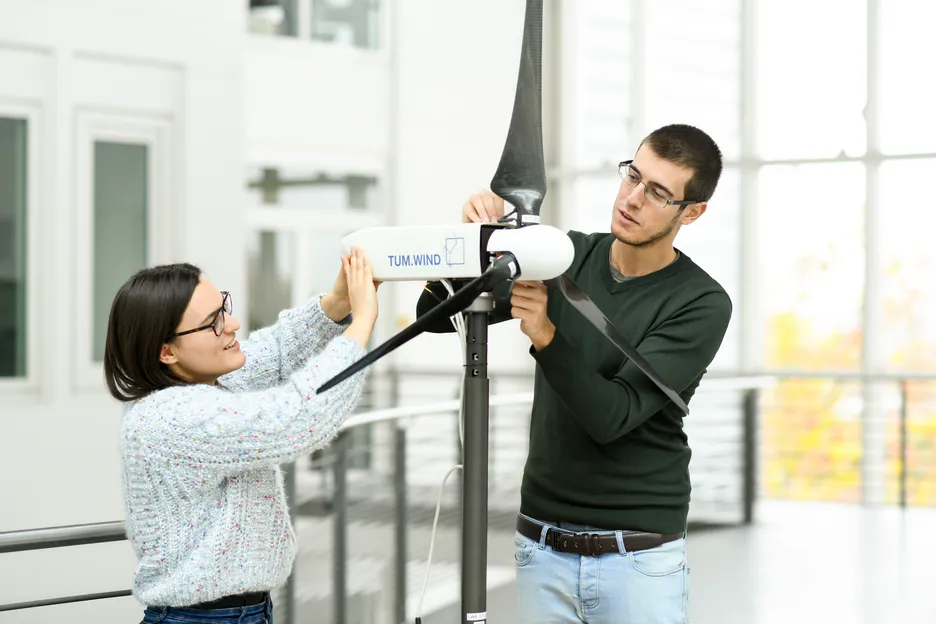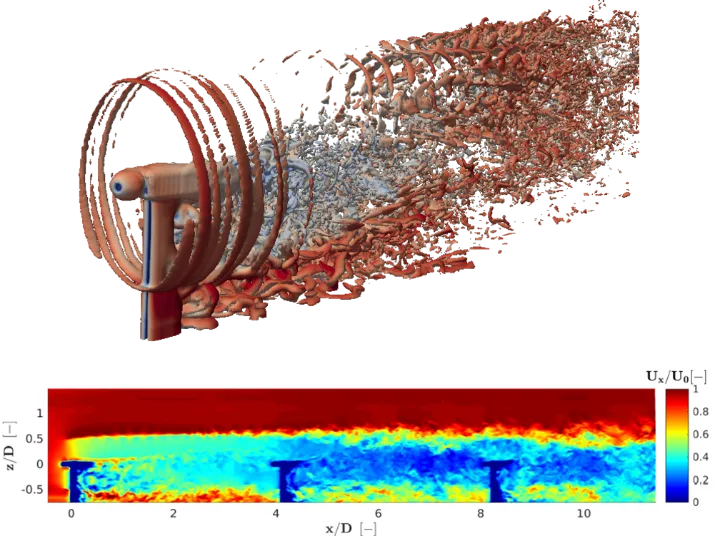Experimental Testing

Experimental testing is crucial for verifying and validating the results of all our research efforts, including mathematical models, simulation tools, control strategies or new technologies. Testing in the field on production machines is however very challenging, possibly expensive and often altogether impossible.
To address some of the limits of full scale testing, WEI has developed new technology for scaled model testing in boundary layer wind tunnels. These are some of the most important research questions that WEI researchers are trying to answer:
- Can we replicate in the controlled environment of a wind tunnel some of the key physical aspects of the energy conversion process from wind? How should scaled models be designed in order to match as many of the relevant physical parameters as possible?
- Can we faithfully replicate wake behavior, wake interactions, and complex terrain effects?
- Can we go beyond the matching of purely aerodynamic effects, replicating at scale also the aeroservoelastic behavior of wind turbines?
- Can closed-loop control methods for wind turbines and farms be tested at scale? If so, what do we capture with good precision, and what are the limits of these scaled models with respect to full-scale reality?
Wind turbine models

Our scaled models are miniaturized wind turbines and, exactly as full-scale machines, they are governed by closed-loop pitch, torque and yaw controllers. Optionally, a super-controller can be used for the collective control of clusters of wind turbine models, enabling the study of wind farm control techniques.
Our family of wind turbines includes at present three different sizes: the largest models (termed G2, with a 2 meter rotor diameter) can be optionally equipped with aeroelastically scaled blades, while the smaller ones (G1 and G0.6, of 1 and 0.6 meters of diameter, respectively) are used for modeling wind turbines clusters, studying wake interactions and complex terrain effects. A high-fidelity digital copy of the models and the wind tunnel has been developed by WEI researchers, using state of the art CFD techniques coupled with aeroelastic wind turbine models.

Experimental results
The experimental results are used to validate the digital models, which in turn are used for studying wakes, turbulent flows within wind farms and wind plant control, as well as for the planning of future experiments. Experimental activities at WEI are not limited to scaled testing. In fact, within a joint project with the research cluster WindForS (Windenergie-Forschungscluster), we are working on the development of an experimental test site in complex terrain.The test facility, funded by the Federal Ministry for Economic Affairs and located in Baden-Württemberg, will include two highly-instrumented 750 kW wind turbines, as well as extensive instrumentation for the measurement of wind conditions. Once operational, the test site will enable new exciting and unique testing capabilities, paving the way for an improved understanding of wind conditions and the optimization of wind turbines for complex terrain applications.
